Canna ‘Tropicanna Black’
canna lily 'Tropicanna Black'
‘Tropicanna Black’ is a dramatic Canna whose deep purple paddle-shaped leaves are a perfect foil to large orange-red flowers often borne from July to October on stems up to 1.2m. A wonderful choice for summer borders and patio displays, requiring some protection from winter frost.
Want to be notified when this product is back in stock?
Plant Biography
‘Tropicanna Black’ is a dramatic Canna whose deep purple paddle-shaped leaves are a perfect foil to large orange-red flowers often borne from July to October on stems up to 1.2m.
Cannas grow from underground rhizomes, which are rich in starch and grown in many areas worldwide as a commercial crop for both humans and livestock. All Canna species originate from semi-tropical and tropical parts of North and South America, though there are large naturalised populations around the world as well as a great many cultivars bred for horticultural display. The species name comes from the Latin for cane or reed, denoting their imposing upright habit.
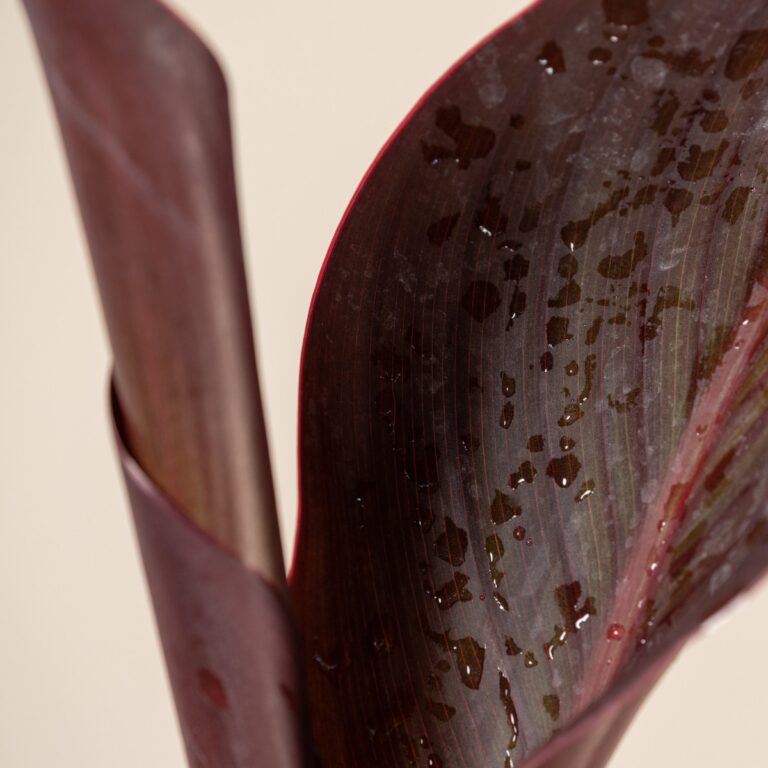
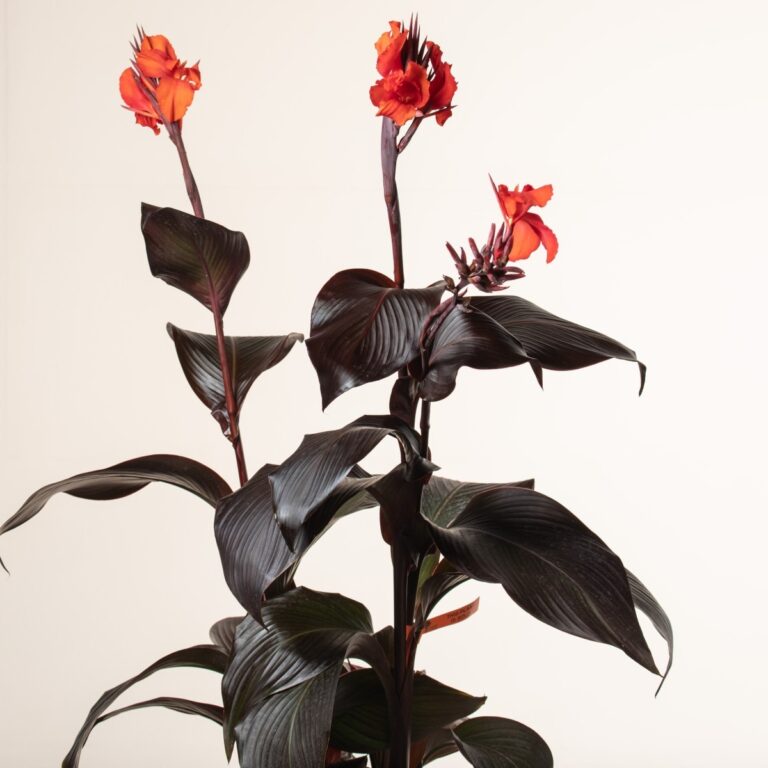
Care & Size Guidance
The foliage of ‘Tropicanna Black’ will reach a height of about 60cm+ but including the flower spikes attain a total of 1.2m. A showy statement feature for a sunny spot, they do best in rich fertile soil or with regular feeding.
They are very sensitive to winter frost: In mild areas they can be left outside in a sunny sheltered position if soil is not too wet and a deep layer of mulch applied. In colder areas they should be lifted after the first Autumn frost, cut back and stored in barely-damp compost in a frost free place for the winter.
Expert Tip
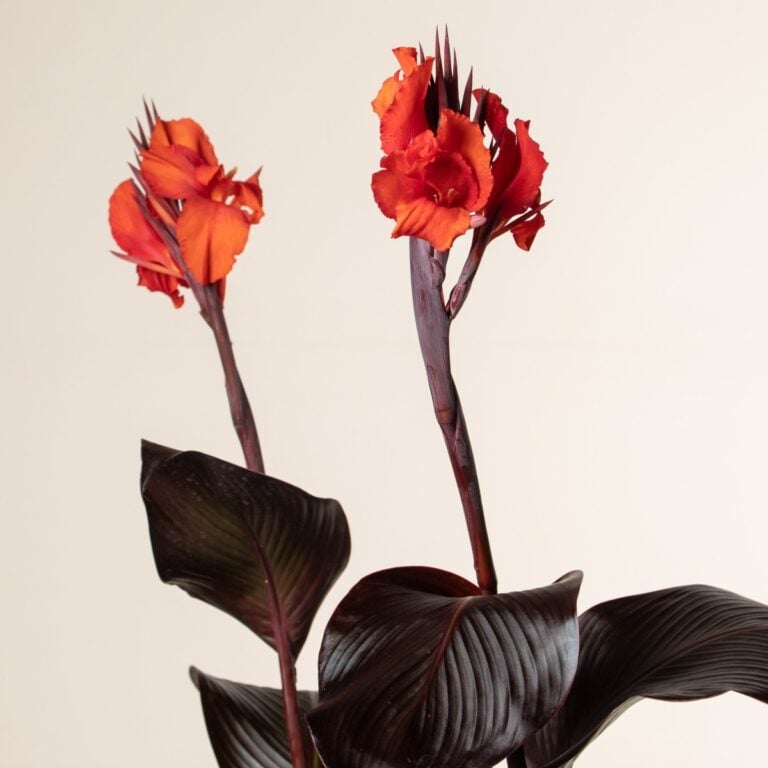
Overwintering cannas
Overwintering Cannas in the UK requires some care and attention, as these plants are not fully hardy in colder climates.
In late September or even October, remove the dead or damaged foliage, leaving about 6 inches (15 cm) of growth above the rhizomes. This minimizes the disease risk and eases handling. If needed, divide the rhizomes, ensuring each section has a healthy growth point and roots.
Overwintering can be done either in the ground or by removing the rhizomes from the ground.

Overwintering in the ground
You can overwinter Cannas in the ground without digging up the rhizomes in regions with mild winters, such as the southern parts of the UK. Before the first frost, apply a thick layer of mulch (such as straw, leaves, or wood chips) around the base of the Cannas. This will help insulate the soil and protect the rhizomes from freezing temperatures. If you anticipate extremely cold weather, consider using frost blankets or burlap to cover the Cannas. This provides an extra layer of protection against freezing temperatures.
If you experience prolonged periods of cold and wet conditions, there’s a higher risk of rotting. In this case, you might need to consider digging them up for storage.
As the weather warms up in spring, remove the mulch and any coverings from the Cannas. New growth should start to emerge. Resume regular care, including watering and fertilizing, to support healthy growth.
It’s important to note that overwintering Cannas in the ground is riskier than digging them up and storing them indoors. In regions with colder winters, Cannas left in the ground are more susceptible to rot and damage. Therefore, the decision to leave them in the ground should be based on the severity of your local winter conditions and your willingness to take the risk.
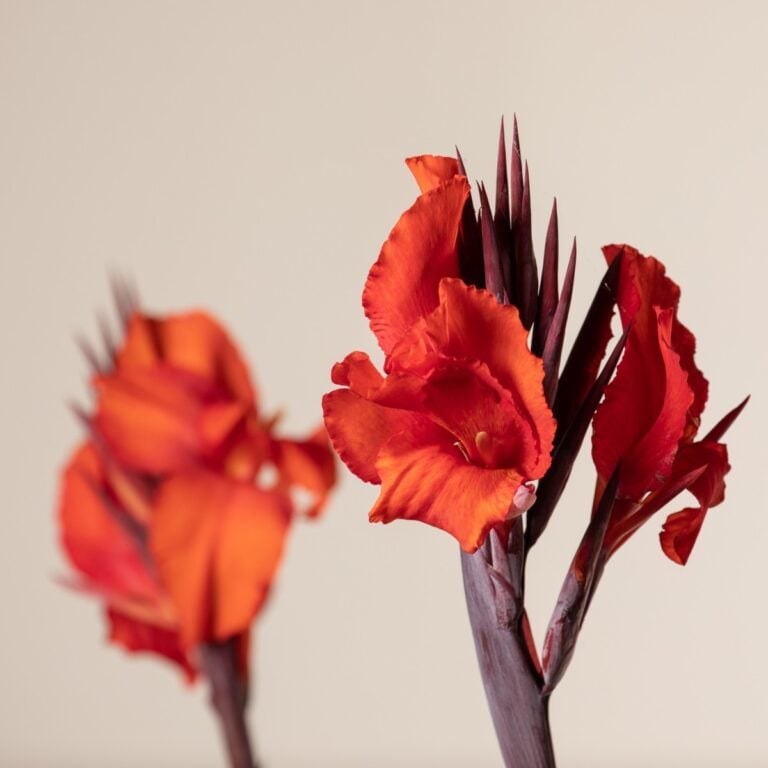
Overwintering in storage
Carefully dig up your Cannas from the garden bed or container. Use a fork or spade to gently lift the rhizomes (underground storage structures) out of the soil. Shake off excess soil and remove any dead or damaged foliage.
If your Cannas have grown into large clumps, you can divide the rhizomes for propagation. Ensure that each division has at least one healthy growing point (eye) and some roots.
Place the cleaned and trimmed Cannas in a cool, dry, and well-ventilated area for a few days. This helps the rhizomes cure and prevents rot during storage. Choose a storage location that remains cool (4-10°C) and frost-free throughout the winter. Ideal options include an unheated basement, garage, or insulated shed. Store the Cannas in a container filled with slightly dampened peat moss, vermiculite, or dry sand. Place the rhizomes in the medium, making sure they’re not touching each other. This prevents them from rotting.
As the threat of frost passes in the spring (usually around April or May), you can start preparing to plant your Cannas outdoors again. Inspect the rhizomes for any signs of growth or rot. Healthy rhizomes will show new shoots emerging.
Remember that overwintering success can vary based on your local climate and the specific Cannas you’re growing. It’s always a good idea to monitor your plants closely and adjust your approach as needed.
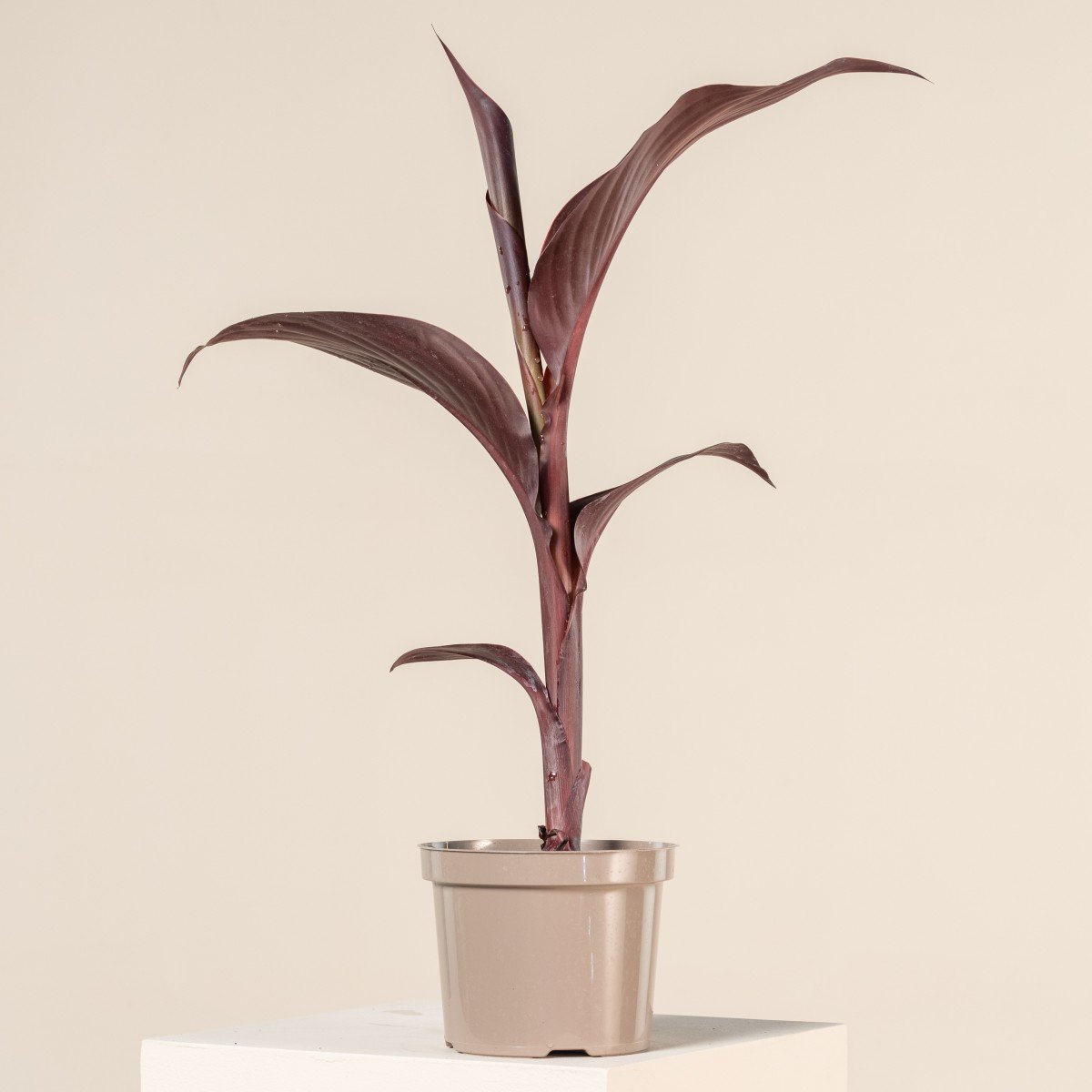
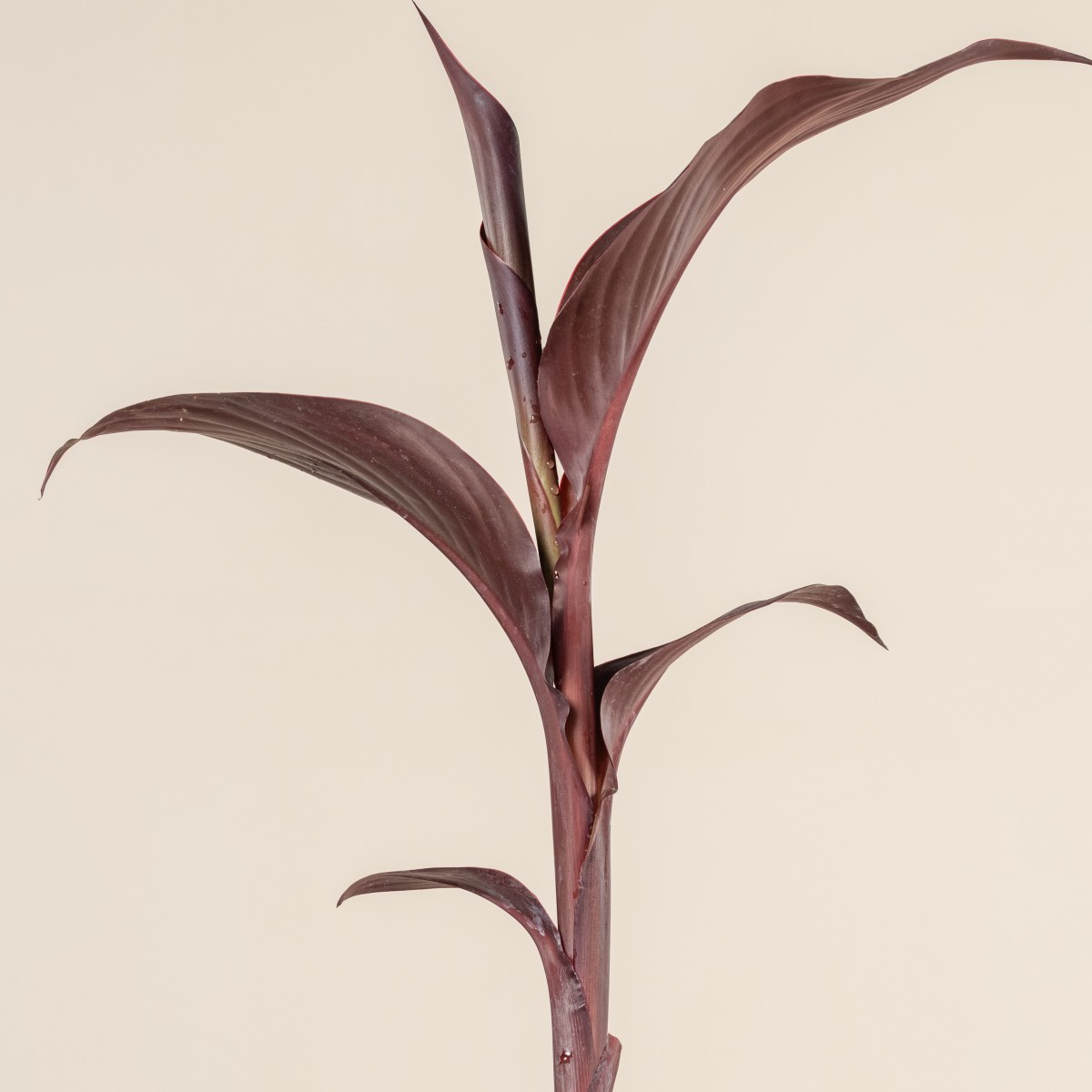
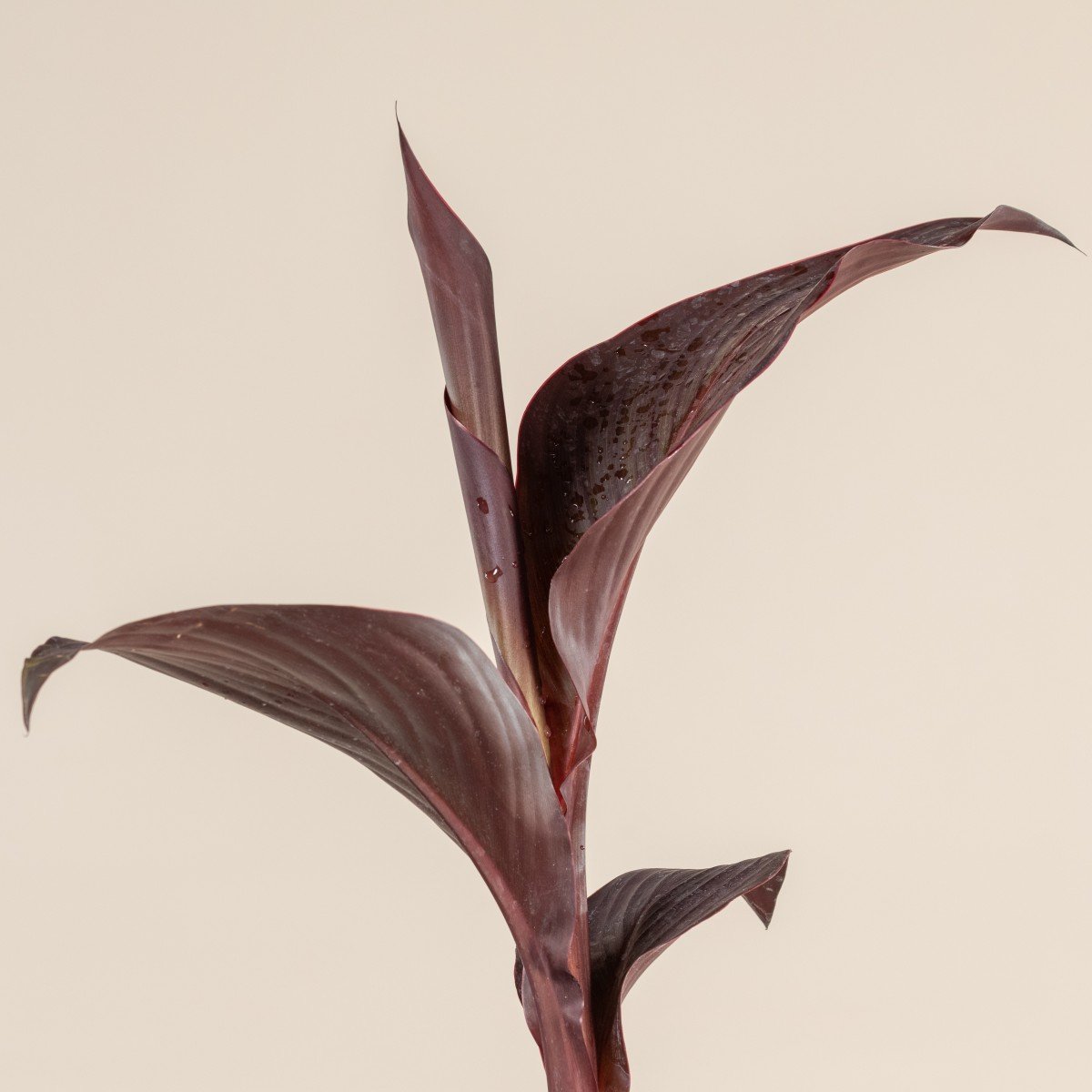
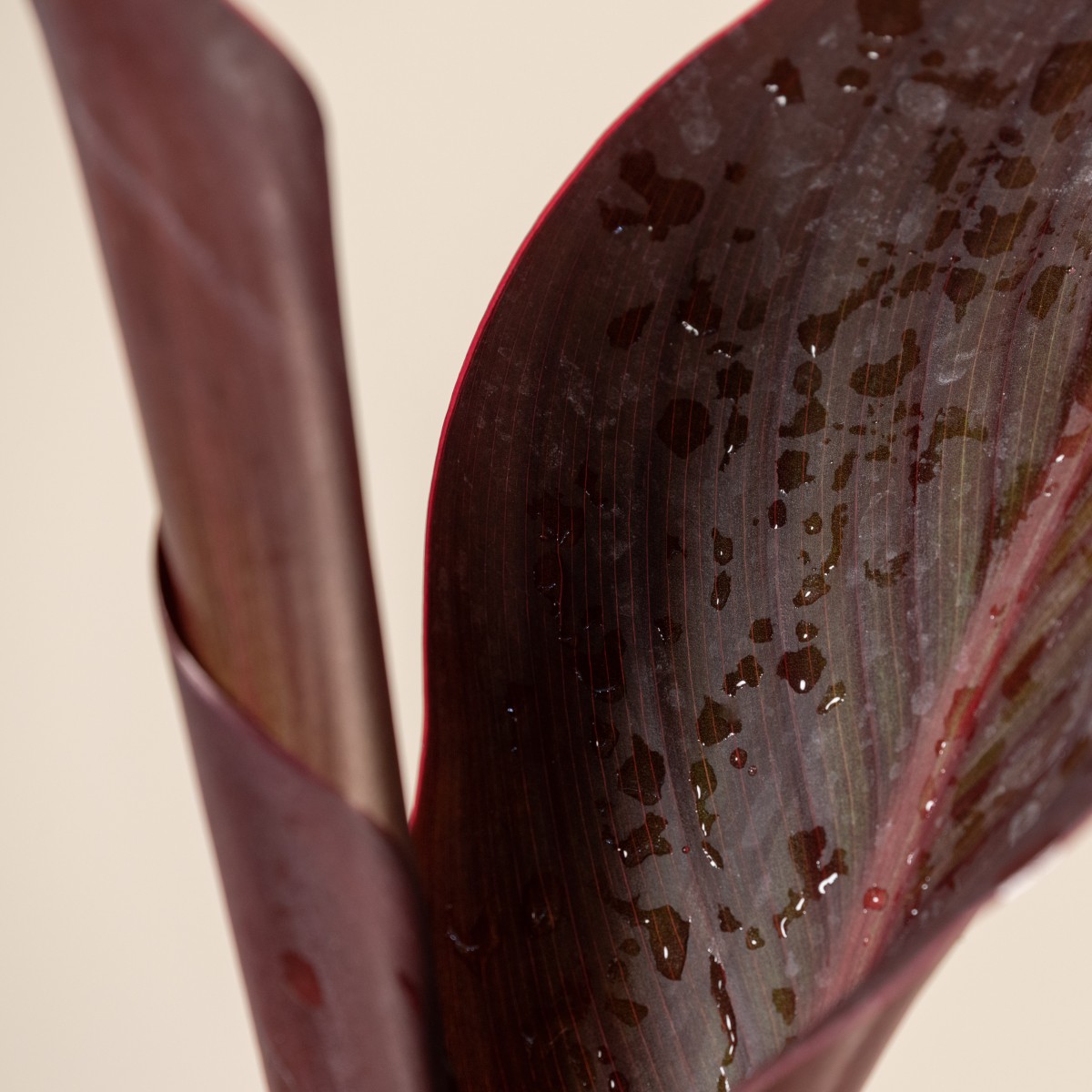

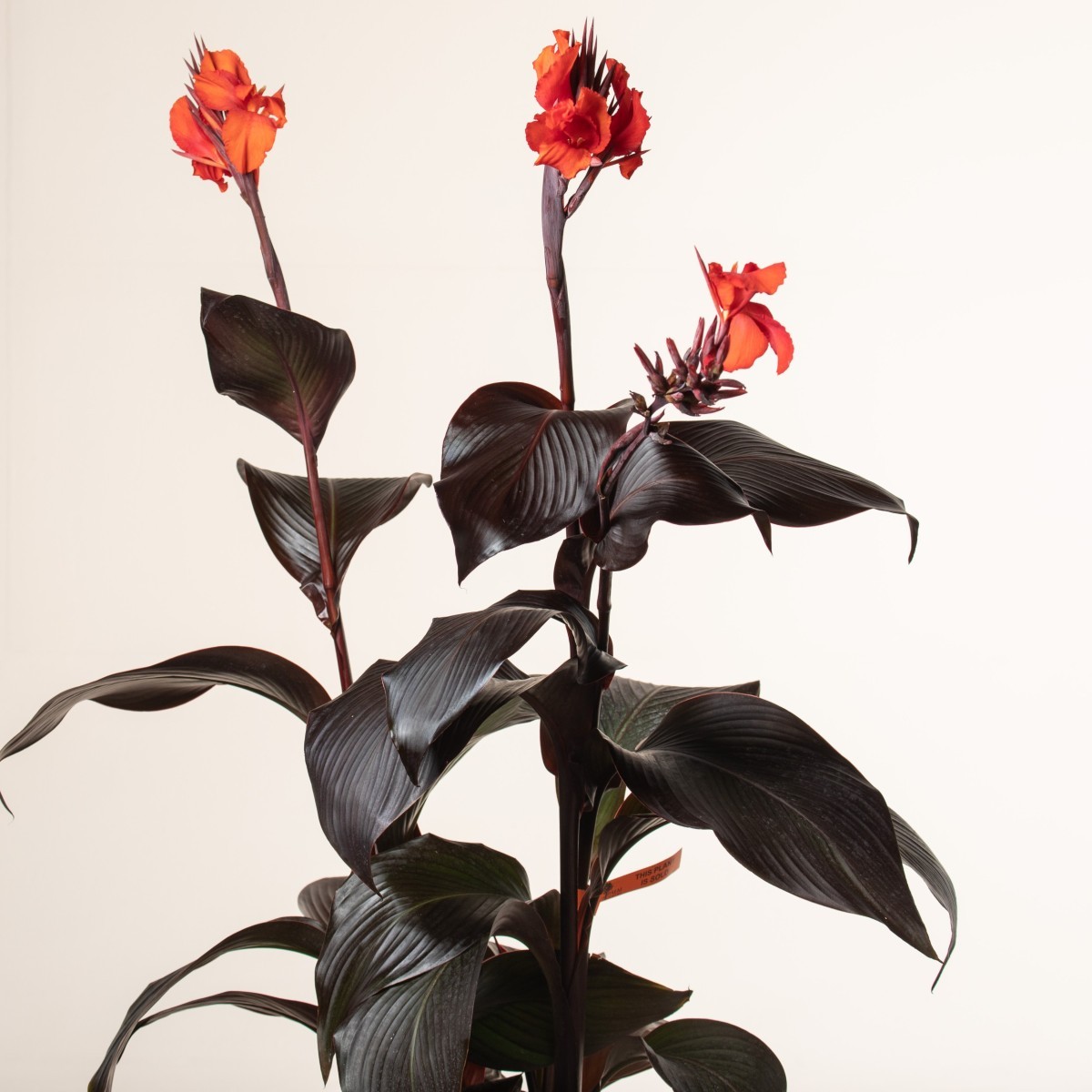
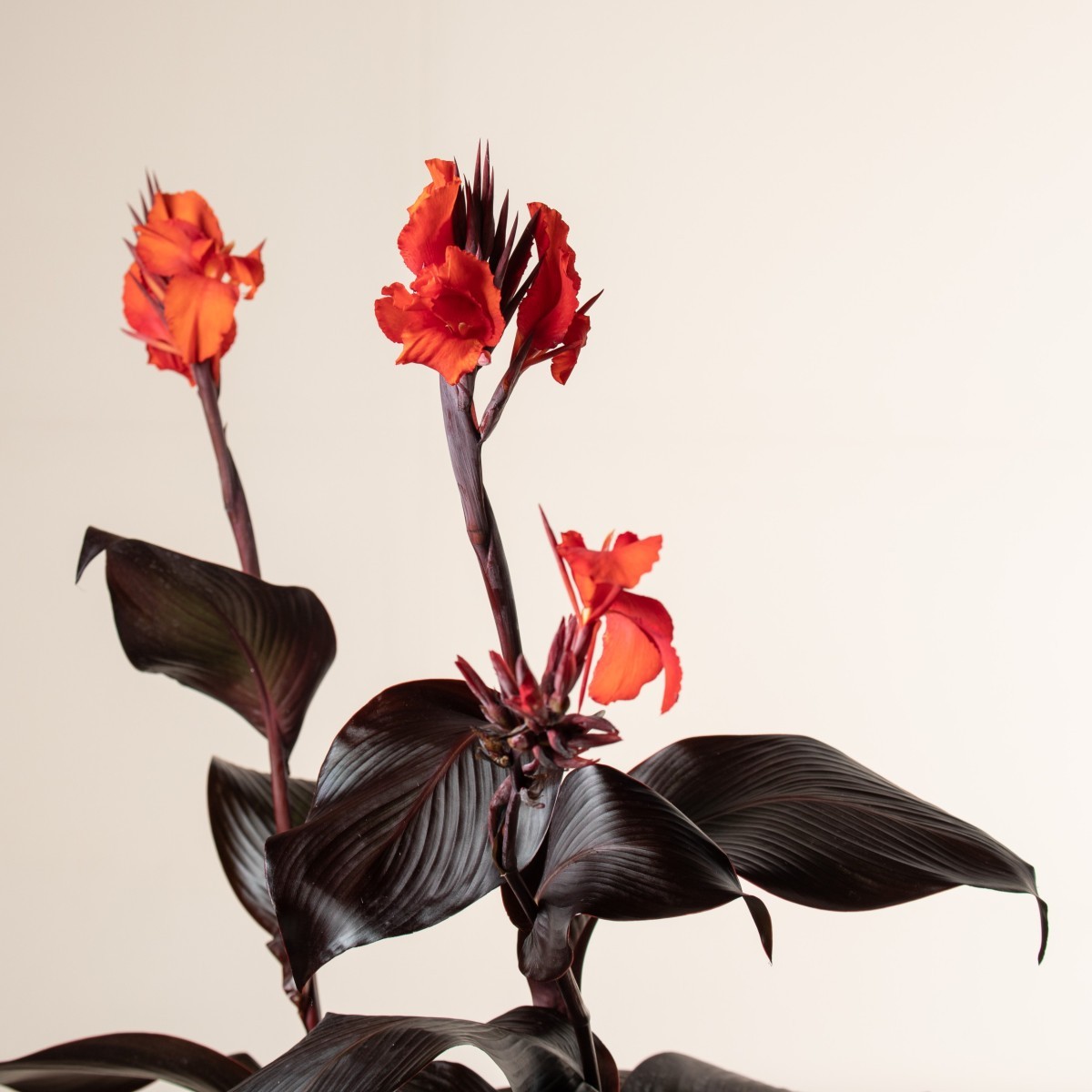
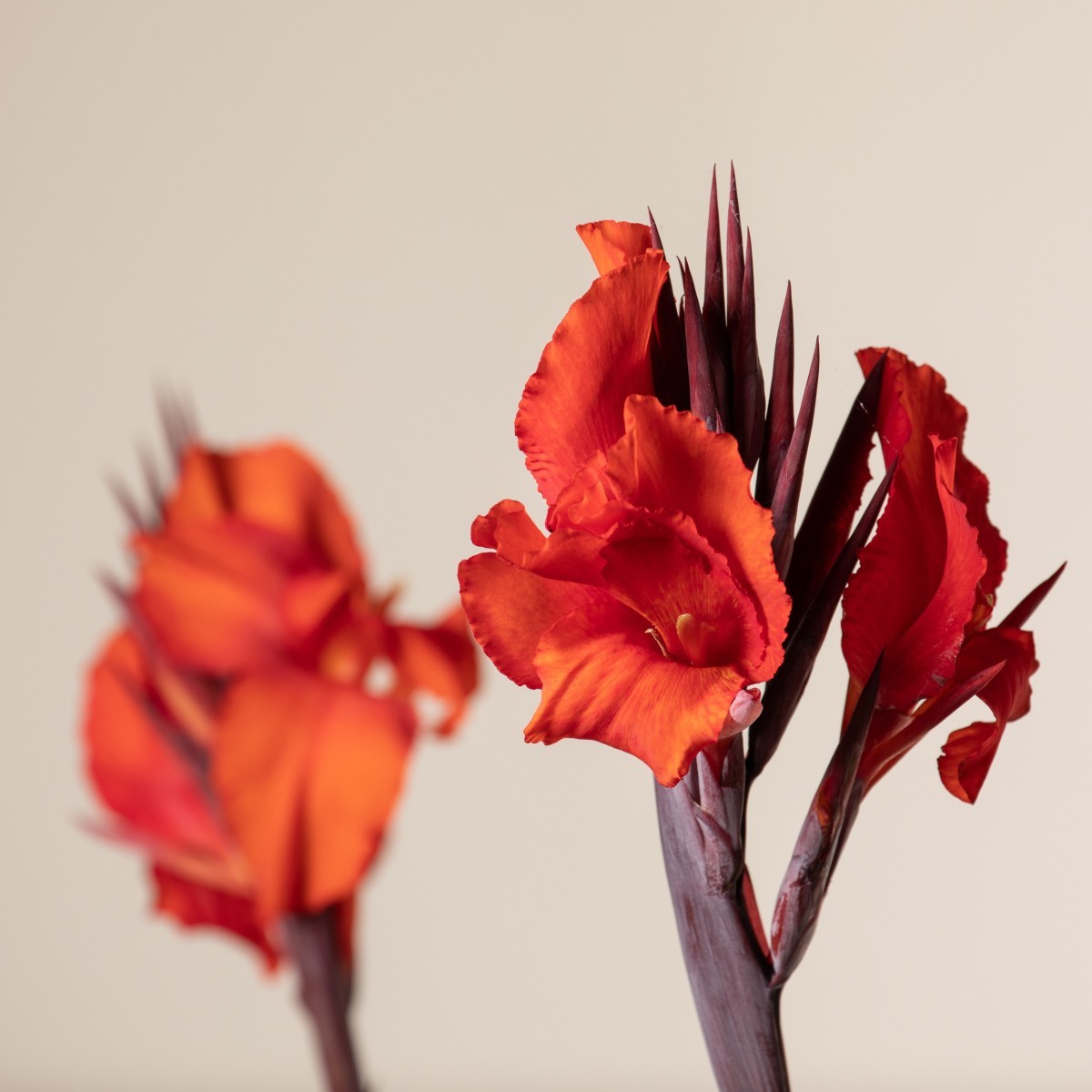

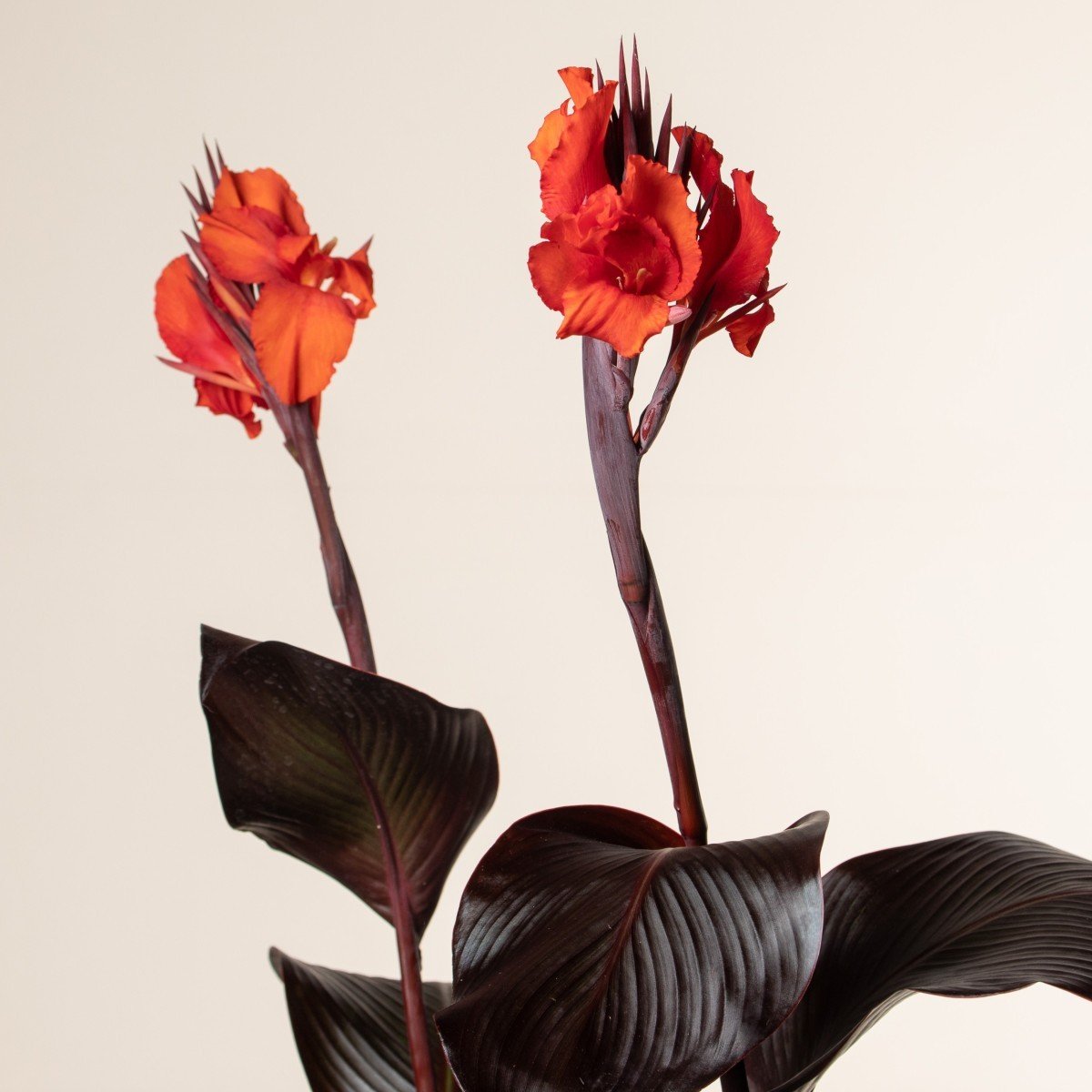

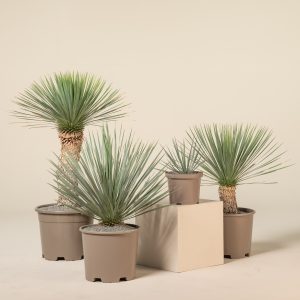



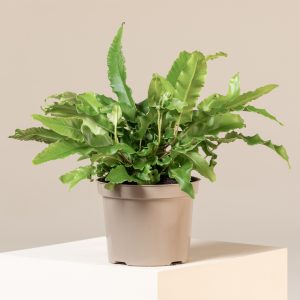


I purchased a Canna Tropicanna Black at the beginning of September 23. I was kept informed of delivery and it allowed me to designate what to do if if was not in…Perfect. Everything was exceptional from purchase to delivery and the condition and expectations of the plant. Great care had been taken to package this delicate plant.
Maurice Dixon (verified owner) –
I’ve bought quite few plants from the Palm Centre recently and they have been of excellent quality and a competitive price. Today’s Cannas are no exception. I can’t praise this company highly enough.
Steve (verified owner) –
An excellent looking Canna for the price and quality. Arrived in perfect condition. Well done Palm centre once again.
Phil B. –
Really pleased with my order, great plants would buy from you again, thank you
Donna A. –